
Asteroids is a space-themed multidirectional shooter arcade video game designed by Lyle Rains and Ed Logg released in November 1979 by Atari, Inc. The player controls a single spaceship in an asteroid field which is periodically traversed by flying saucers. The object of the game is to shoot and destroy the asteroids and saucers, while not colliding with either, or being hit by the saucers' counter-fire. The game becomes harder as the number of asteroids increases.

Star Trek Generations is a 1997 first-person shooter with adventure and strategy elements by MicroProse, based on Star Trek Generations (1994), the seventh film in the Star Trek film franchise. It includes voice-acting by much of the cast of the film including actors Patrick Stewart, William Shatner, and Malcolm McDowell, as well as footage from the film.
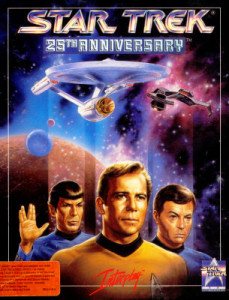
Star Trek: 25th Anniversary is an adventure video game developed and published by Interplay Productions in 1992, based on the Star Trek universe. The game chronicles various missions of James T. Kirk and his crew of the USS Enterprise. Its 1993 sequel, Star Trek: Judgment Rites, continues and concludes this two-game series.

Atahualpa, also Atawallpa (Quechua), Atabalica, Atahuallpa, Atabalipa, was the last effective Incan emperor before his capture and execution during the Spanish conquest.

Gonzalo Pizarro y Alonso was a Spanish conquistador. He was the younger paternal half brother of Francisco Pizarro, who led the Spanish conquest of the Inca Empire. Pizarro was the illegitimate son of Gonzalo Pizarro y Rodríguez de Aguilar (1446–1522), who, as an infantry colonel, served under Gonzalo Fernández de Córdoba during the Italian Wars. He was also the younger paternal half brother of Hernándo Pizarro y de Vargas and the older paternal full brother of Juan Pizarro y Alonso.

Flight Unlimited II is a 1997 flight simulator video game developed by Looking Glass Studios and published by Eidos Interactive. The player controls one of five planes in the airspace of the San Francisco Bay Area, which is shared with up to 600 artificially intelligent aircraft directed by real-time air traffic control. The game eschews the aerobatics focus of its predecessor, Flight Unlimited, in favor of general civilian aviation. As such, new physics code and an engine were developed, the former because the programmer of Flight Unlimited's computational fluid dynamics system, Seamus Blackley, had left the company.
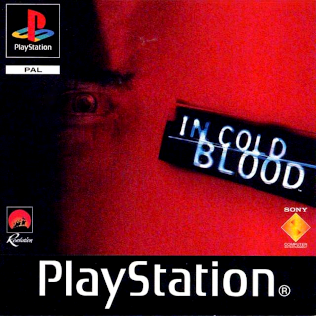
In Cold Blood is an adventure game developed by Revolution Software for the PlayStation and Microsoft Windows in 2000 in Europe and in 2001 in North America. The player assumes the role of John Cord—an MI6 agent who is captured while on assignment and tries to figure out who betrayed him through a series of flashbacks.
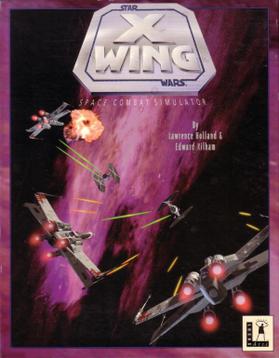
Star Wars: X-Wing is a space simulation video game, the first of the X-Wing combat flight simulation games series. The player's character flies starfighters, including the X-wing, for the Rebel Alliance. The narrative precedes and parallels the events of Star Wars Episode IV: A New Hope.

Master of Orion II: Battle at Antares is a 4X turn-based strategy game set in space, designed by Steve Barcia and Ken Burd, and developed by Simtex, who developed its predecessor Master of Orion and Master of Magic. The PC version was published by MicroProse in 1996, and the Macintosh version a year later by MacSoft, in partnership with MicroProse. The game has retained a large fan base, and is still played online.

Terminal Velocity is a shooter video game originally developed by Terminal Reality and published by 3D Realms for DOS and Windows 95, and MacSoft for Mac OS. It is an arcade-style flight combat game, with simpler game controls and physics than flight simulators. It is known for its fast, high-energy action sequences, compared to flight simulators of the time.

Millennium 2.2 is a resource management computer game by Ian Bird, released in 1989 for Atari ST, Amiga and MS-DOS. The MS-DOS version of the game was released as Millennium: Return to Earth. It is the forerunner to Bird's Deuteros, which is in a similar resource management game but many times larger and more difficult.

F-15 Strike Eagle is an F-15 Strike Eagle combat flight simulator originally released for the Atari 8-bit family in 1984 by MicroProse then ported to other systems. It is the first in the F-15 Strike Eagle series followed by F-15 Strike Eagle II and F-15 Strike Eagle III. An arcade version of the game was released simply as F-15 Strike Eagle in 1991, which uses higher-end hardware than was available in home systems, including the TMS34010 graphics-oriented CPU.
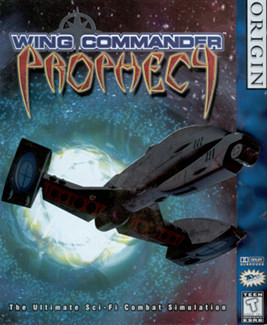
Wing Commander: Prophecy is the fifth installment in the Wing Commander science fiction space combat simulator franchise of computer games. The game was originally released in 1997 for Windows, produced by Origin Systems and distributed by Electronic Arts, and in 2003, a GBA conversion was produced by Italy-based Raylight Studios and distributed by Destination Software.

Shuttle is a space flight simulator game developed by Vektor Grafix and published by Virgin Games. It was released in 1992 on the IBM PC, Amiga and Atari ST.
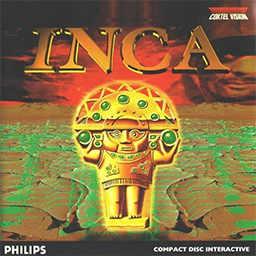
Inca is a video game developed by Coktel Vision and published by Sierra On-Line in 1992. The game describes the conflict between Incas and Spaniards in a sci-fi, space opera setting. A sequel, Inca II: Wiracocha, was released in 1994.
A space flight simulation is a genre of flight simulator video games that lets players experience space flight to varying degrees of realism. Common mechanics include space exploration, space trade and space combat.

AV-8B Harrier Assault is a combat flight simulator/realtime strategy game developed by Simis and first published by Domark in 1992. An updated version using SVGA graphics was released later the same year, alternatively known as SVGA Harrier. In 1994, a modified version of the SVGA version was released for the classic Mac OS under the new name Flying Nightmares, which was later ported to 3D0.
An adventure game is a video game genre in which the player assumes the role of a protagonist in an interactive story, driven by exploration and/or puzzle-solving. The genre's focus on story allows it to draw heavily from other narrative-based media, such as literature and film, encompassing a wide variety of genres. Most adventure games are designed for a single player, since the emphasis on story and character makes multiplayer design difficult. Colossal Cave Adventure is identified by Rick Adams as the first such adventure game, first released in 1976, while other notable adventure game series include Zork, King's Quest, Monkey Island, Syberia, and Myst.















